The first time I had to transport an oversized excavator, I realized regular trucks wouldn’t cut it. That’s when I learned about low bed trucks.
If you’re facing similar challenges, understanding low bed trucks can save you time, stress, and money.
I’ve spent significant time researching and personally experiencing the use of heavy-duty trucks, so I know exactly what to look for.
By reading this article, you’ll clearly understand what a low bed truck is, its key benefits, and why it’s a valuable tool for your business.
So, let’s dive in!
1. What Is a Low Bed Truck?
A low bed truck, also known as a lowboy or low loader. What makes it different from other trailers is its design. The main deck sits much lower than a typical flatbed, making it ideal for hauling tall and heavy equipment without violating road height restrictions.
Low bed trucks are used in industries where heavy and oversized machinery needs to move regularly. Construction, mining, infrastructure development, and manufacturing are just a few sectors where they’ve become essential.
If you deal with machines that are either too tall or too heavy for standard hauling, understanding how low bed trucks work could save your business time, stress, and costly mistakes.
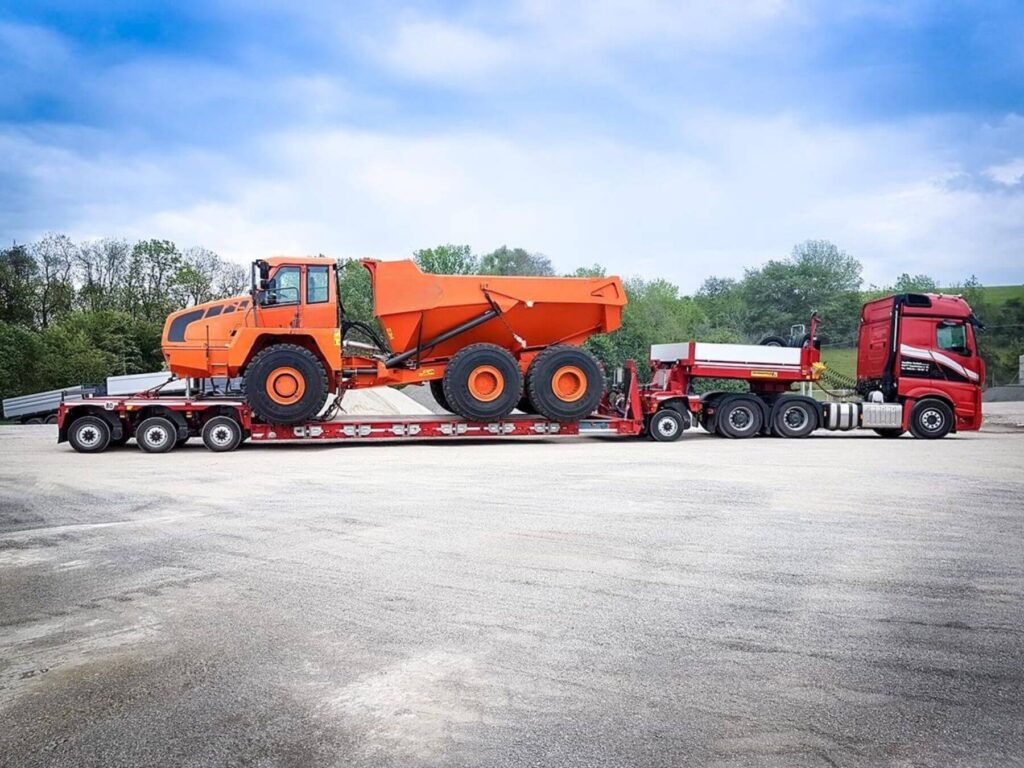
2. Advantages of Using Low Bed Trucks
If your work involves moving oversized equipment, you’ve probably had your fair share of logistical challenges. Low bed trucks help take a lot of the pressure off by making the transport process smoother, safer, and more practical.
Tall and Heavy Loads Become Manageable
Transporting bulky equipment doesn’t have to be complicated. Low bed trucks are designed with a lower deck height, so tall machinery can be loaded without the usual struggle to stay within legal height limits. That means less time spent dismantling gear and more time getting it to where it needs to go. It also reduces the risk of damage during reassembly. If you’re running a tight schedule, that time saved matters.
More Stability Means Less Risk on the Road
A lower center of gravity gives these trucks better balance, even when hauling awkward or top-heavy machines. That added stability can really pay off when navigating turns, rough roads, or job sites with uneven terrain. It helps reduce sway and shifting, which makes life easier for the driver and keeps your cargo safer.
Less risk also means fewer headaches with insurance and fewer unexpected delays. It’s a small change that makes a big difference in overall transport safety.
One Truck, Many Uses
Low bed trucks aren’t limited to one specific type of job. Whether you’re in construction, energy, manufacturing, or infrastructure, they can handle a wide variety of heavy and oversize loads. That kind of flexibility is helpful when you’re managing multiple projects or switching between different types of cargo.
Instead of needing a different trailer for every job, one well-chosen low bed can cover more ground. It’s a smart long-term move for any business that values efficiency.
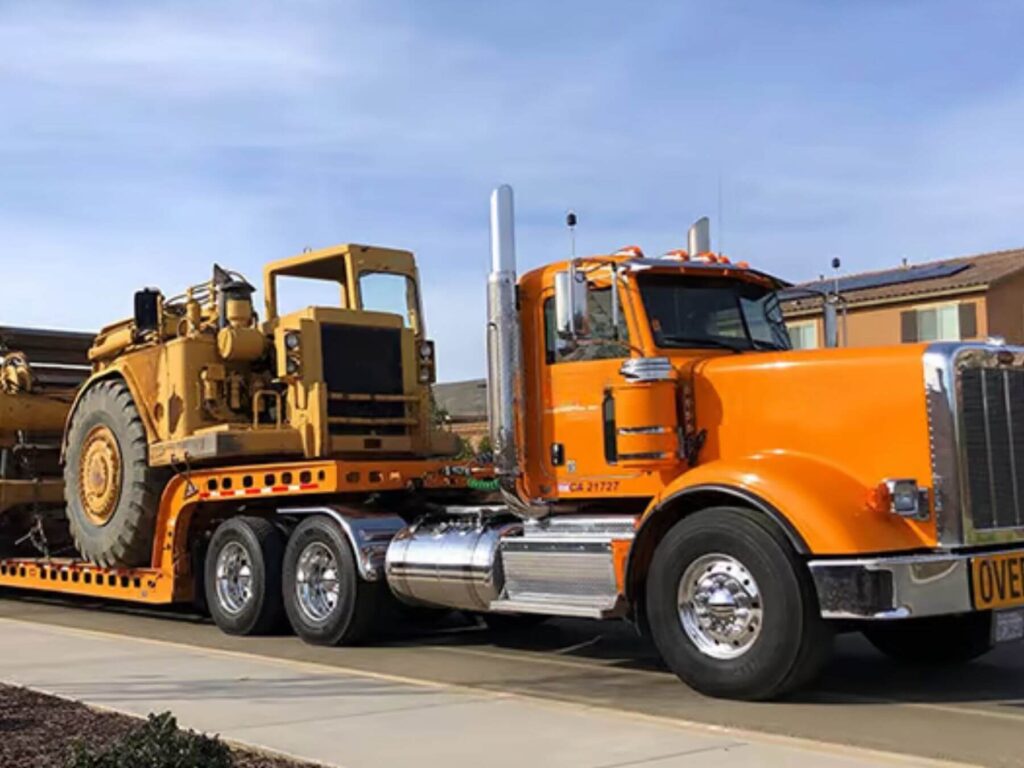
3. Key Features of Low Bed Trucks
If you’re thinking about adding a low bed truck to your fleet, it helps to know what makes these trailers stand out. Their design isn’t flashy, but every feature is built with purpose—and those details can make your hauling jobs a lot easier.
- Low Deck Height: The most noticeable feature is the ultra-low deck between the front and rear axles. This lowered design gives you more clearance to transport tall equipment without permits or route restrictions.
- High Load Capacity: These trucks are built to carry some of the heaviest machinery used in construction, mining, and industrial work. The frame, suspension, and axles are all reinforced to handle the pressure without compromise.
- Detachable Gooseneck: Some models come with a removable gooseneck that lets you drive equipment directly onto the trailer. It’s a huge time-saver and removes the need for external loading equipment.
- Hydraulic Suspension: A good number of low bed trucks come with hydraulic or pneumatic suspension systems. These help absorb shocks during transit and adjust the deck height for smoother loading.
- Wide and Extendable Beds: Some trailers offer extendable frames or wider decks to handle long or oversized cargo. This gives you more flexibility without needing to switch trailers every time the job changes.
- Multiple Axle Options: You’ll often see low bed trucks with multiple axles to distribute weight more evenly. This reduces stress on the road surface and helps meet legal requirements for heavy loads.
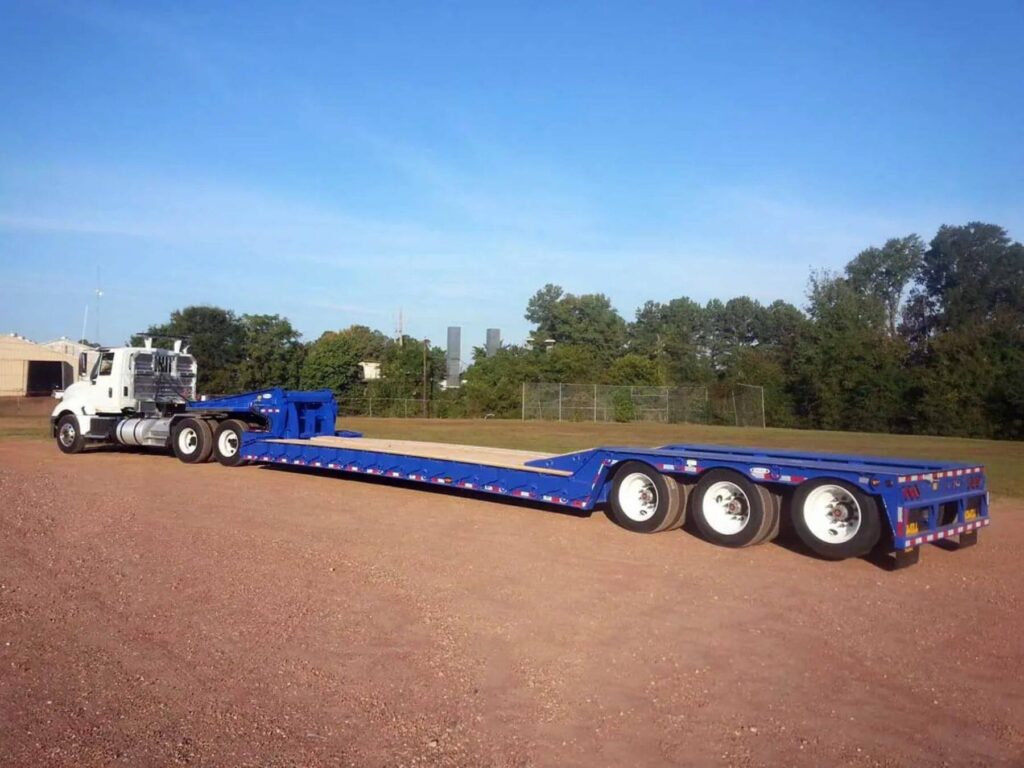
4. Common Uses of Low Bed Trucks
Low bed trucks play a key role in industries where size and weight make transportation more complicated. They’re often the most practical option when moving large equipment or specialized machinery.
Construction and Infrastructure Projects
Construction projects depend on heavy-duty machines like bulldozers, cranes, and pavers. These machines are often too tall or bulky for standard trailers, which makes low bed trucks an ideal choice. They allow you to transport equipment in one piece without needing extra labor to take it apart and reassemble it on-site.
This cuts down on delays and keeps the project moving forward. For companies managing multiple job sites, that kind of efficiency is hard to beat.
Heavy Manufacturing and Industrial Relocation
In manufacturing, the movement of oversized machinery is part of day-to-day operations. Equipment like presses, turbines, and generators often need to be relocated between plants or delivered to installation sites. Low bed trucks can handle the dimensions and weight without risking damage during transit. Their stability and strength reduce the need for extra transport support.
Mining and Energy Sector Transport
Mining and energy industries often operate in remote or rugged areas. Getting large drills, transformers, or heavy extraction equipment to these sites can be a challenge. Low bed trucks are built to navigate uneven terrain while keeping heavy loads secure and balanced. Their lower height also helps when crossing bridges or underpasses in restricted routes.
Agriculture and Forestry Equipment Moves
Modern farming and forestry use equipment that is far from small. Tractors, harvesters, and logging machinery often need to be moved across long distances. Low bed trucks make it possible to transport this kind of equipment without damaging public roads or the machinery itself.
Their wide decks and ramp options make loading straightforward. For businesses covering large geographic areas, this helps reduce downtime and fuel costs.
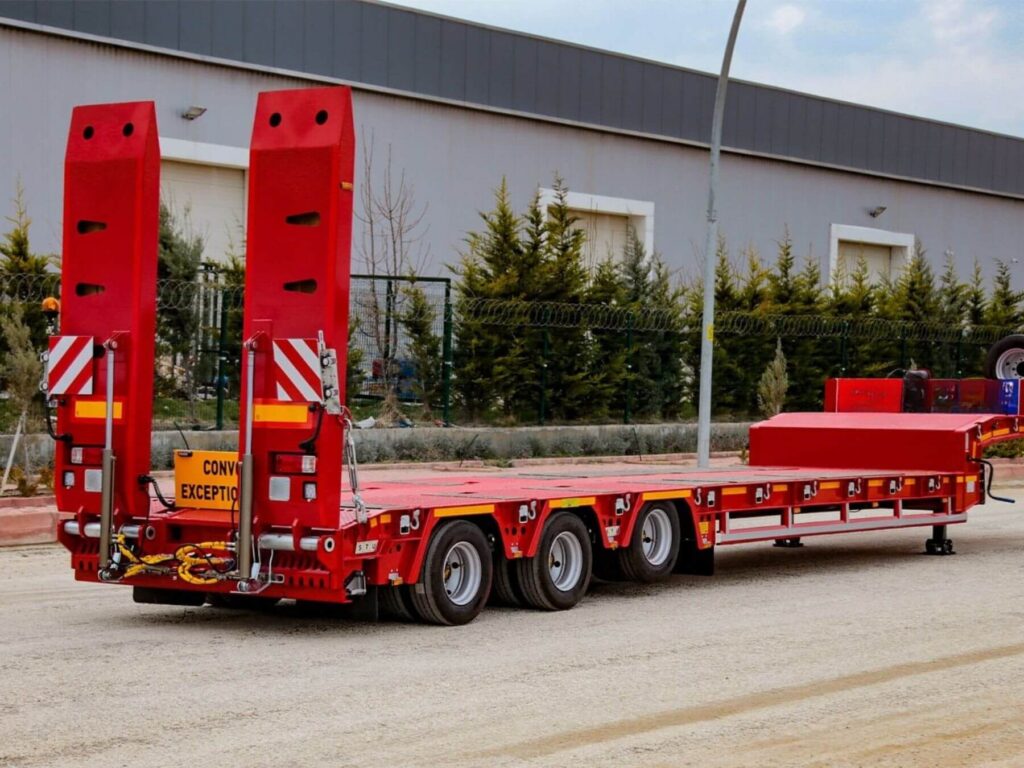
5. Low Bed vs. Other Trailer Types
Choosing the right trailer can make or break a heavy transport job. To help you decide where a low bed truck fits in, here’s a clear side-by-side comparison with other commonly used trailer types.
| Feature | Low Bed Truck | Flatbed Trailer | Step Deck Trailer | Double Drop Trailer |
| Deck Height | Very low, often 18–24 inches | Standard height, around 60 inches | Slightly lower than flatbed | Lower than step deck, but higher than low bed |
| Load Height Capacity | Excellent for tall machinery | Limited due to high deck | Moderate load height | Good for tall loads, but less stable |
| Load Weight Capacity | High, supports very heavy loads | Moderate, not ideal for oversized weight | Suitable for medium to heavy loads | High, though varies by configuration |
| Best For | Oversized, heavy, and tall equipment | General freight and palletized goods | Medium-sized equipment and taller cargo | Transformers, tanks, and large machinery |
| Ease of Loading | High, especially with detachable gooseneck | Easy, but lacks height flexibility | Rear loading with ramps | Rear loading; no gooseneck access |
| Legal Height Clearance Help | Excellent, avoids need for special permits | Poor, often exceeds height restrictions | Better than flatbed but not always compliant | Often helps but not as well as low bed trucks |
| Stability During Transport | Very stable due to low center of gravity | Less stable with tall loads | Stable for moderate loads | Moderate stability, depends on load |
| Industry Use Cases | Construction, mining, industrial moves | Logistics, warehouse freight, general cargo | Equipment rental, small machinery transport | Power plants, oil and gas, custom machinery |
6. Safety Tips for Operating Low Bed Trucks
Transporting heavy equipment comes with real risks, but most issues can be avoided with the right approach. If your team handles low bed trucks regularly, building good safety habits is a must for protecting your people, your equipment, and your schedule.
- Secure the Load Properly: Chains, straps, and tie-downs should always be rated for the weight you’re hauling. It’s not just about following regulations—it’s about keeping the equipment stable through every turn, bump, or stop.
- Double-Check the Weight Distribution: Uneven weight can throw off the trailer’s balance and make it harder to control. Always make sure the heaviest parts of the load are placed over the axles and evenly distributed.
- Watch the Clearance, Even with a Low Deck: Low bed trucks offer more height clearance, but bridges, overpasses, and utility lines can still be a problem. Planning your route ahead of time helps avoid tight squeezes or dangerous reroutes.
- Use Spotters for Loading and Unloading: Even experienced operators benefit from another set of eyes during critical moments. A spotter can help guide the process and reduce the risk of damaging the equipment or the trailer.
- Stay on Top of Inspections and Maintenance: Brake systems, hydraulic components, lights, and tires all need regular checks. Keeping everything in top shape prevents last-minute failures and keeps your team on schedule.
7. How to Choose the Right Low Bed Truck
Choosing the right low bed truck comes down to knowing your loads, your routes, and how often you’ll be on the road. A good match will save you time, money, and a lot of avoidable stress.
Understand the Equipment You’ll Be Moving
Everything starts with the size and shape of your cargo. Look at the height, weight, and length of the machines or materials you transport most often. Some equipment needs a detachable gooseneck for front loading, while others might work better with rear ramps.
If your cargo is especially tall or wide, look for trailers with adjustable widths or extendable beds. Matching the trailer to your typical load makes daily operations a lot smoother.
Think About Where the Truck Will Be Operating
Your work environment affects more than just driving conditions. Hauling equipment on well-maintained highways is very different from maneuvering through uneven, muddy, or narrow job sites.
If your routes involve steep grades or rough terrain, look for features like extra axles or reinforced frames. Suspension systems that adjust for load and terrain are also helpful. The trailer needs to hold up under pressure in real working conditions, not just on paper.
Consider Frequency and Type of Use
If you’re moving heavy equipment regularly, build quality and durability should be high on your checklist. You may need upgraded materials, better suspension, and stronger axles to handle daily wear. For occasional use, flexibility and cost-efficiency might matter more than maximum capacity. You could even consider renting or leasing if your usage is project-based. Choose based on long-term needs, not just one job.
Pay Attention to Support and Resale Value
Service access can make or break your experience with a low bed truck. Make sure the manufacturer offers local parts and repair support so downtime stays minimal. It’s also worth checking how well the trailer holds value over time. Well-known brands tend to offer better resale potential and stronger aftermarket support. This makes them a smarter business investment in the long run.
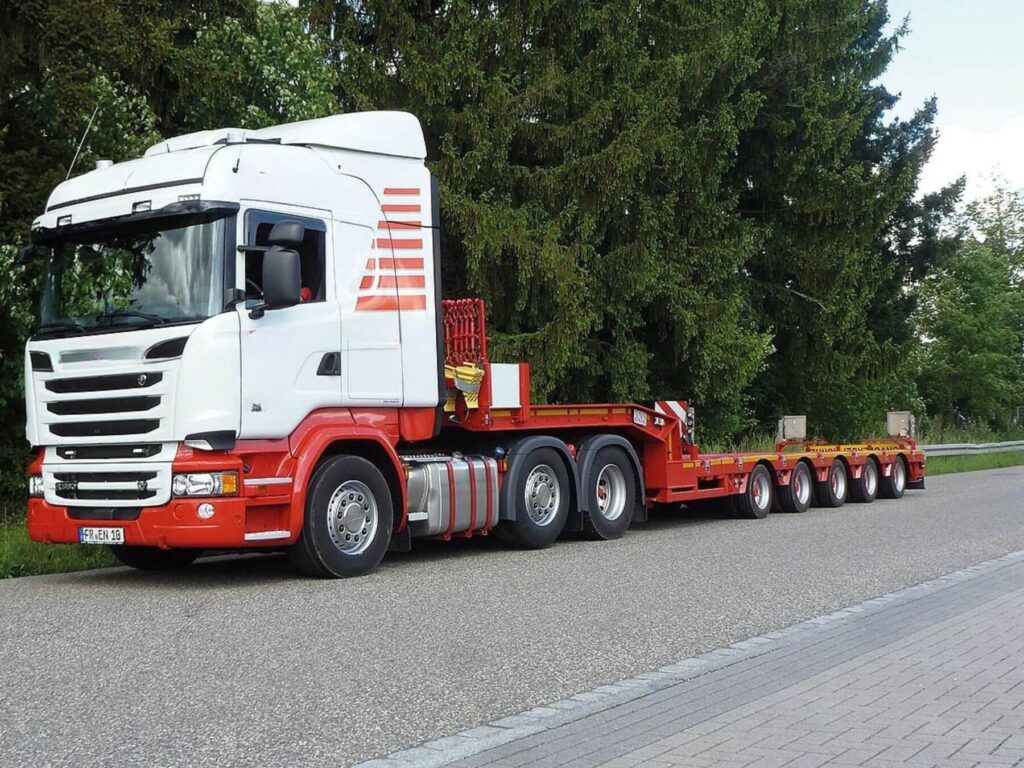
Conclusion
That first job where I needed a low bed truck? We got the machine moved, safely and on time. All because we had the right trailer for the job.
Now you know what a low bed truck is, what it can do, and how to pick the right one.
You’ve seen how it fits in construction, mining, and manufacturing. You’ve learned why it’s safer, stronger, and smarter.
So what’s holding you back?
Contact us today at Rhinotrail for expert advice and reliable trailer solutions.


